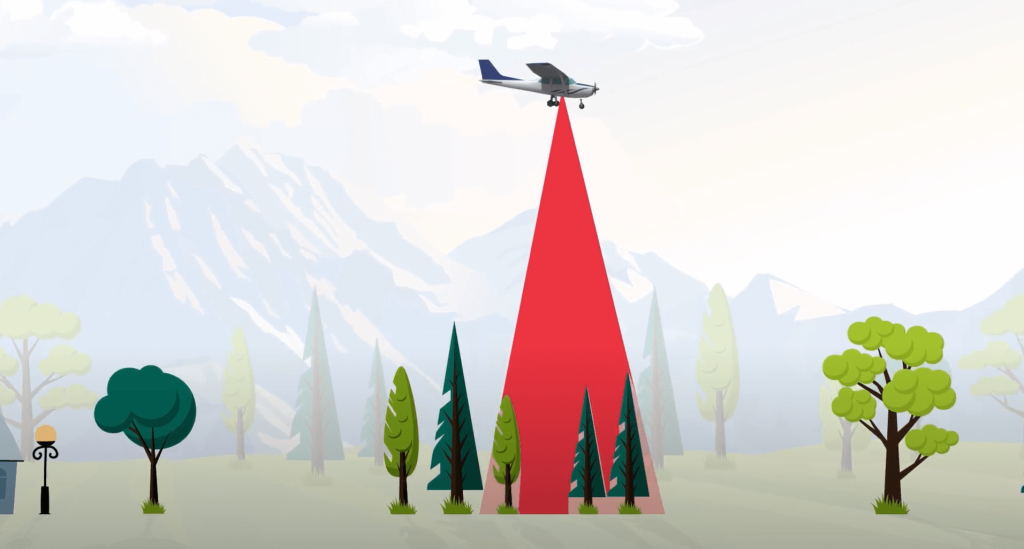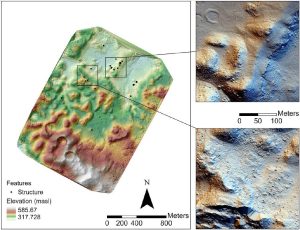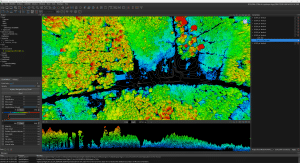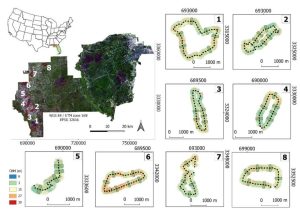The purpose of LiDAR
LiDAR, or light detection and ranging, is a tool used to quickly, accurately and densely measure 3D features from the world around us.
LiDAR is a form of “remote sensing” – meaning we aren’t physically measuring things with our hands, but rather, using sensors. To measure topography, vegetation or other data across large areas, we need remote sensing methods that can take many measurements quickly, easily, accurately. LiDAR sensors can take hundreds of thousands of measurements each second and are represented in the form of a point cloud.
The point cloud can be used in various analytical processes to take distance measurements, compute volumes, and model objects in three dimensions.
So how does LiDAR work?
How does LiDAR measure distance?
In addition to emitting a laser pulse, a LiDAR system measures the time between when each pulse is sent from the system to the time it is reflected back to the sensor.
Since the speed of light is known, we can calculate distance using a simple mathematical formula (distance = speed x time). With the help of positioning and orientation sensors within the lidar system, distance is then represented as an elevation.
Position Measurements are typically collected once every second, orientation measurements are typically collected between 125 to 400 times per second. These positioning and orientation sensors are critical components and are integral for every aerial lidar system to precisely calculate where and when each point is collected.
In summary, a LiDAR system is an active remote sensing system, composed of components that emit the laser, receive a returned signal, and calculate the system’s position and orientation, to produce a geospatially accurate depiction of the world around us in the form of a 3D point cloud.
How Can LiDAR Measure the Ground Through Trees?
A laser pulse emits light energy as a bundle of photons. As these photons move towards the ground, they hit objects, such as buildings, trees, and ground vegetation. In the case of trees and vegetation, some of the photons reflect off the branch and return immediately to the sensor.
However, some of the photons pass through gaps in the tree or vegetation, striking other features, like lower branches, or even the ground, before returning to the lidar sensor.
In this way, multiple reflections may be recorded from one pulse of light. In the lidar industry, this is known as multiple returns.
Some LiDAR Systems at Phoenix LiDAR Systems return two returns, some three, some four, and some even return up to 15 returns to the sensor.
This depends on the power of the laser used in the system and a few other factors. The result is a point cloud with a true 3D representation of both the vegetation and ground data.



